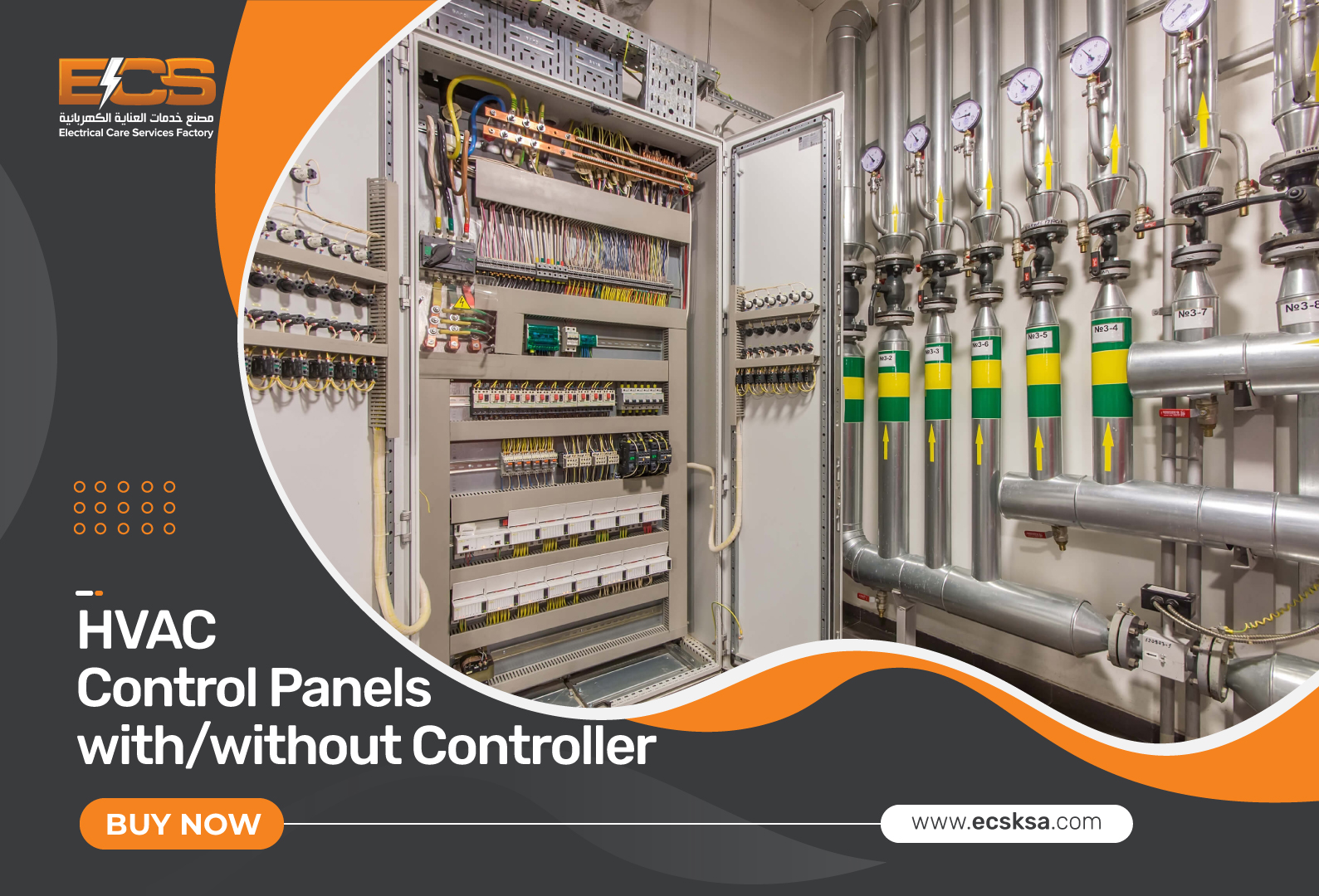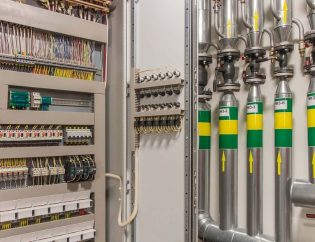Yet, having the latest HVAC controls enable you to turn your building into a habitable place.
In this article, you’ll learn about the following.
- What are HVAC controls?
- How do HVAC controls work?
- Benefits of HVAC controls
- Features of HVAC controls
Keep reading further to find out everything.
What Does HVAC Stand for?
Heating, ventilation, and air conditioning are referred to as HVAC. Therefore, HVAC control systems regulate or keep an eye on the machinery to maintain appropriate levels of the environment’s humidity and temperature. They also handle cooling and heating.
 What are HVAC Controls?
What are HVAC Controls?
The definition of HVAC control systems can vary depending on whether it is used for a very simple residential or possibly a very complex large-scale application. However, in general, HVAC controls are defined as devices that regulate the operation of Heating, Ventilation, and Air Conditioning equipment.
Typically, a thermostat attached to a self-contained air conditioning unit can be found in homes. You can manage the operations of that standalone device by modifying the temperature (or set point). For instance, setting your thermostat to 75 degrees in the summer tells your air conditioner to run until the room reaches that temperature, at which time it should turn off.
In this straightforward illustration, your thermostat is a sensor and an HVAC controller because it senses your home’s temperature. As we further explore more complicated systems, we’ll discuss more about sensors.
The HVAC controls may occasionally be a component of a larger system known as a building automation or energy management system when applied to larger facilities.
Building Automation Systems
Large facilities frequently have extremely complicated mechanical systems that must operate effectively in order to function properly and not waste energy. HVAC, lighting, fire alarm, and access/security systems are usually among the devices that building automation systems (BAS) control.
When creating sequences of operations to make a building “smart,” having these consolidated under one software platform might be beneficial. However, some building operators see this as a risk because they put “all their eggs in one basket.” We shall keep the focus of this post on standalone HVAC control systems.
How do HVAC Control Systems Work?
You must first comprehend a sequence of operations to understand how HVAC control systems operate. In order to automate the activities of HVAC systems based on input data from sensors and simultaneous actions of other pieces of equipment, a sequence of operations, also known as a logic statement, is used.
Another Straightforward Illustration
Assume you have an office in a business building and that your side of the building’s thermostat is set to 75 degrees. The controller receives this input from the thermostat via network infrastructure, and the controller then uses that feedback to carry out the sequence listed below.
- If the temperature inside the building exceeds 75 degrees,
- then turn on the A/C unit.
- If the temperature inside the building is 75 degrees or less,
- then turn off the air conditioning.
We may dial in those sequences to guarantee the best comfort and energy efficiency by composing statements that direct the equipment on how to function under specific scenarios. Additionally, it prevents us all from having to manually switch on and off machinery.
As you may expect, larger HVAC systems and more complicated machinery require larger and more complex operational sequences. There are also a number of priority levels in these bigger systems that govern which directions a piece of equipment should be obeying. Let’s pretend there are 3 priority levels for the purpose of simplicity.
- Operator
- Logic Programming
- Weekly Schedule
Operator: The person operating the system gives explicit instructions on how it should function.
By using logic programming, the machinery operates according to the previously discussed order of operations.
The weekly schedule specifies which days and times the machinery should be on or off.
In this case, the Operator has priority over the other two because the Weekly Schedule is given the lowest priority. We’ll utilize an air handling unit (AHU) to cool a floor in this example, beginning in the morning.
The AHU’s controller will initially check to verify if the operator is commanding it. Only if the building engineer notices abnormalities that warrant turning the AHU on earlier than usual or possibly shutting it off entirely would the Operator command be required.
The AHU controller will then check the logic programming, which states that the AHU should turn on if the indoor air temperature is over 80 degrees at 6 am. This sequence is set up specifically for mornings that are quite warm so that, if necessary, the AHU can get a head start.
If not, the AHU’s controller will check the Weekly Schedule to see what commands are listed there. The air handler will be in operation from 7 am to 5 pm, Monday through Friday, according to the Weekly Schedule.
Although there are many levels of logic and at least a few other priority levels in real-life applications, perhaps this example clearly conveys the idea of how priority levels operate.
Types of HVAC Controls
HVAC controllers employ a variety of control strategies. Limit controls, linear controls, PID controls, feedforward controls, fuzzy logic, and sophisticated or non-linear controls are a few examples.
- When a specified point or limit is reached, the HVAC controller sends a signal to stop or start a process variable. This is known as limit control.
- A variable control signal matches a variable input signal in linear control.
- Real-time system feedback is necessary for PID control or proportional-integral-derivative control.
- Direct-control compensation from the reference signal is offered by feedforward control.
- A sort of HVAC control known as fuzzy logic allows variables to have uncertain values (as in partial truth) as opposed to a binary state (completely true or completely false).
- HVAC controllers employ advanced or nonlinear controls like neural networking and adaptive gain.
Benefits of HVAC Control Systems
HVAC control systems are crucial for workplace conditions that promote health and safety as well as efficiency in business operations.
- Lower utility expenses and energy consumption
- Remove heat from the procedures used in production.
- Accessible clean, fresh air for improved dispersion
- Opportune working conditions
- Recycles the heat from all workspaces
- Keep the temperature where you want it to be.
- A rise in productivity
- Achieve time and cost savings by balancing temperatures
- Safe working conditions
- Keep an eye on the
HVAC Controller features
Thermostats and humidity sensors provide input, and HVAC controllers deliver outcomes to HVAC chillers and other HVAC systems. The majority of industrial thermostats can be programmed, controlled remotely, or both. An HVAC controller’s user interface may contain analog elements like knobs and switches or a digital front panel with a menu or keypad. HVAC controllers that can be computer-programmed, web-enabled, and Ethernet-ready are frequently available. A programmable logic controller is a component of several HVAC controllers (PLC). Others offer supervisory data acquisition and control (SCADA) functionality or human-machine interface (HMI) software. Rate indication, data logging, and totalizing capabilities are other features that an HVAC controller may offer.
Conclusion
Now, you know comprehensive detail on HVAC controls to choose the best for your building.
Remember, your operations will come to a halt if your HVAC control system fails.
Check out our product pages for the best HVAC control products for all kinds of facilities.
Frequently Asked Questions
Q1: What are the basic components of a control system HVAC?
The 6 Most Essential Parts of an HVAC System
- Heat Exchanger
- Blower Motor
- Combustion Chamber
- Condenser Coil or Compressor
- Evaporator Coil
- Thermostat
Q2: What causes HVAC control board failure?
Age, static electricity, and voltage surges can all harm the transistors on the control board. A control board’s transistors frequently fail first. Unstable wiring: Over time, the furnace’s vibrations may cause the wiring on the control board to become unstable.
Q3: How do I know if my HVAC circuit board is bad?
Your control board has power if it is receiving 120 volts of AC. If your control board is powered on but has no diagnostic light, it is probably damaged and has to be replaced. NOTE: To check the electricity, you’ll need a multimeter.
Q4: How do I reset my HVAC control board?
- Using the thermostat, turn off your air conditioning system.
- Find the breaker box by searching.
- Your AC unit should be turned off at the breaker.
- Before switching the breaker back to the “on” position, wait at least one full minute.
- Before switching your unit back on at the thermostat, wait 30 minutes.
Do you have a question in your mind? If so, make sure to fill out the form below!



